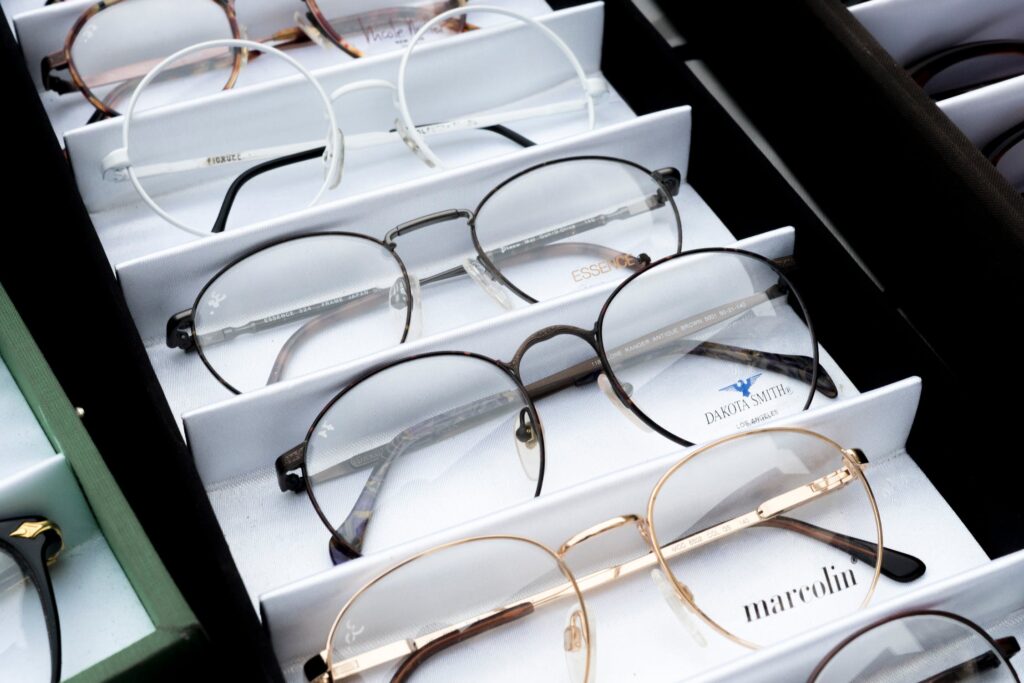When Were Eyeglasses Invented?

There is nothing as common as seeing people wearing eyeglasses today, as eyeglasses have become a part of our everyday life. To some, glasses are a provisional vision tool, while to others (like fashion lovers), an accessory to complement style and design. Prescription eyeglasses are vision correction tools, including glass for farsightedness, nearsightedness, and reading glasses.
There are other special glasses, such as sunglasses, safety glasses, and 3D glasses. Sunglasses usually are tinted-lens glasses that provide eye protection against the sun and give better vision and comfort in bright daylight.
On the other hand, safety eyeglasses are eyeglasses that are commonly used by factory workers, construction workers, lab and machine technicians, etc., to protect them against flying particles or debris, hazardous splatters like chemicals or blood.
3D eyeglasses are specialized glasses used to view specific visual information like 3D films or stereoscopy.
Eyeglasses had evolved over the years, and there has been significant improvement since its invention. In this article, we will be discussing when this all-important accessory was invented.
Who invented Eyeglasses?
Many sources have it that Salvino D’Armate invented eyeglasses in 1285. He was also said to have shared his invention with an Italian monk, Allesandro Della Spina, who later made it public.
The History of Eyeglasses?
There are many reports about the invention of eyeglasses. While many sources claimed that an Italian invented the first pair of wearable eyeglasses in 1317, the concept of glasses may have begun long before the 13th century.
Seneca, the Roman tragedian (4 B.C – 65 A.D), has produced a magnifier for reading small text with a glass globe of water. They soon replaced his invention with a convex glass sphere laid on reading material. This development brought about the invention of the first magnifying eyeglass that enabled monks to illuminate, read, and write manuscripts around 1285-1280.
In the 12th century, Chinese judges used a type of sunglasses created from smoky quartz crystals. The purpose of these sunglasses was not to protect them from the sun but to obscure their eyes so that the witness they interrogated could not recognize them or determine their facial expression.
The artwork had remained the best and most reliable proof of these glasses’ existence during the Renaissance (rebirth). Many sources claimed that this art and literature period began in 1300, but others maintained the era was between the 14th and 17th centuries.
The first known wearable pair of eyeglasses in history was the primitive lenses made from blown glass set into leather or wooden frames back in the 13th century. These frames were occasionally made from an animal’s horn and then perched on the nose or held before the face.
This evidence appeared in 1352 when Tommaso de Modena painted some monks reading and writing manuscripts. One of the monks was using a magnifying glass in painting, while the other had an ordinary glass hanging on his nose.
As these eyeglasses gained popularity, it spread across Europe courtesy of the Italians. At this time, eyeglasses were a status symbol of prosperity and intelligence because only the rich could afford them.
Italian artisans later made a glass disk for the eyes in the 14th century. Because the shape of these disks was similar to lentil beans, they name them lenses. These were convex glasses, protruded in the middle, and were used to rectify farsightedness.
Eyeglasses to correct nearsightedness were produced in 1451 by a German named Nicholas of Cusa. He used thick concave lenses that were thinner in the middle.
In 1727, a British optician Edward Scarlett invented modern style frames placed on the nose and ears. There has since been some notable improvement in the technology and development of eyeglasses after its conception, including:
- Bifocals: In 1784, Benjamin Franklin invented Bifocals eyeglasses. The aim was to help people suffering a combination of farsightedness and nearsightedness.
- Trifocal: John Isaac Hawkins created trifocal in 1827 to address severe nearsightedness
- Polarized lenses: Polarized lenses were created in 1936 by Edwin Land H.
- Plastic frames: Plastic frame became famous for sunglasses around 1940
Modern Innovations
In the 1800s, there was a significant improvement in prescription eyeglasses lens and accuracy. Fashion and style became the trend of eyeglasses in the 1900s. Frames with diverse shapes, colors, and materials became available, and people that want eyeglasses to match their eye color, face shape, or outfit now have a lot of options.
After its innovation in the 12th century in China, sunglasses gained popularity in the 19th and 20th centuries. In the 12th century, Judges used sunglasses to obscure eyes, but today, people use sunglasses to protect against the sun or get better vision and comfort in bright daylight.




